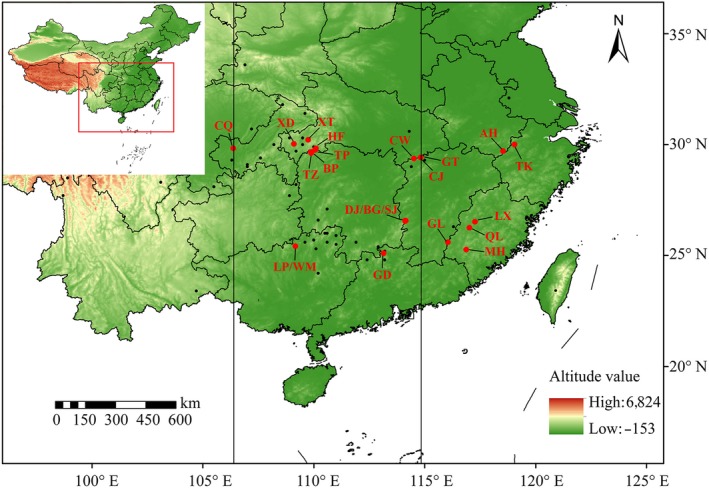
The central-marginal hypothesis predicts that geographically peripheral populations ought to exhibit lowered genetic vary and elevated genetic differentiation than central populations due to smaller environment friendly population dimension and stronger geographical isolation. We evaluated these predictions in the endangered conifer Taxus wallichiana var. mairei.
Eight plastid simple sequence repeats (cpSSRs) have been used to look at plastid genetic variation in 22 populations of Taxus wallichiana var. mairei, encompassing virtually its complete distribution differ.
Low levels of plastid genetic variation and differentiation have been detected in the populations, and the findings have been attributed to low mutation expenses, small population sizes, habitat fragmentation and isolation, and environment friendly pollen or seed dispersal. Hunan and Hubei have been acknowledged as fundamental refugia based on the amount of private haplotypes and species distribution modeling.
Trends in plastid genetic vary and genetic differentiation from central to peripheral populations supported the predictions of the central-marginal hypothesis. In eventualities whereby the future native climate turns into hotter, we predict that some peripheral populations will disappear and southern and southeastern areas will turn into significantly a lot much less habitable.
Factors that embody the levels of precipitation all through the driest month, annual precipitation diploma, and annual temperature differ will in all probability be decisive in shaping the future distribution of these populations. This look at offers a theoretical basis for the conservation of T. wallichiana var. mairei.

The center-periphery hypothesis (CPH) states that the genetic vary, genetic circulation, and population abundance of a species are highest at the center of the species’ geographic distribution. However, most CPH analysis have centered on the geographic distance and have ignored ecological and historic outcomes.
Studies using space of curiosity fashions to define the center and periphery of a distribution and the interactions amongst geographical, ecological, and historic gradients haven’t usually been accomplished in the framework of the CPH, significantly in biogeographical analysis of animal species.
Here, we examined the CPH for a extensively distributed arthropod, Tetranychus truncatus (Acari: Tetranychidae), in jap China using three measurements: geographic distance to the center of the distribution (geography), ecological suitability primarily primarily based on current native climate information (ecology), and historic native climate information from the last glacial most (historic previous).
We found that the relative abundances of utterly completely different populations have been additional strongly related to ecology than to geography and historic previous. Genetic vary inside populations and genetic differentiation amongst populations based on mitochondrial marker have been solely significantly related to historic previous.
However, the genetic vary and population differentiation based on microsatellites have been significantly related to all three CPH measurements. Overall, population abundance and genetic pattern cannot be outlined very properly by geography alone. Our outcomes current that ecological gradients make clear the variation in population abundance greater than geographic gradients and historic elements, and that current and historic elements strongly have an effect on the spatial patterns of genetic variation. This look at highlights the significance of analyzing additional than merely geography when assessing the CPH.